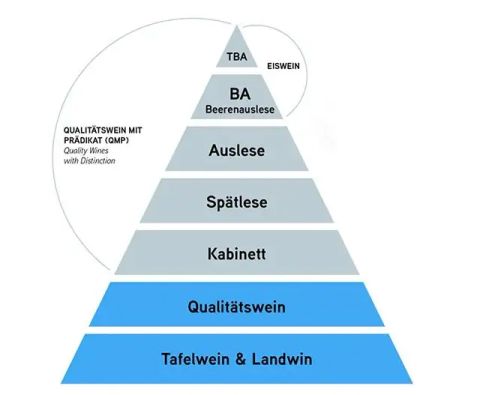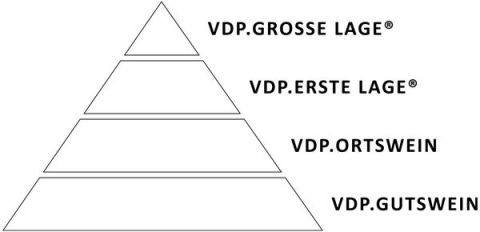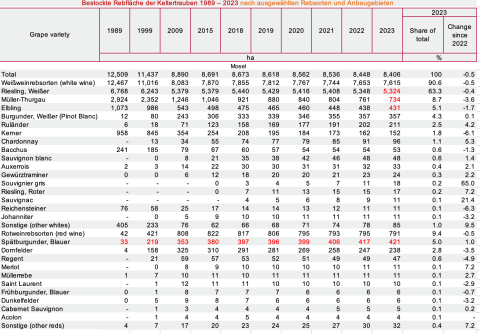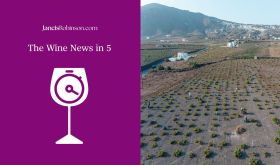Before I delve into the news this week, some reminders: first, please go vote in the Old Vine Hero Awards. The people shortlisted are some of the most influential people in the world for keeping old vines in the ground and believe me, you want to know about them. So go learn about them and then vote!
Second, applications are open for the Gérard Basset Foundation Golden Vines Diversity Scholarships sponsored by Taylor’s Port. This will be the fourth year that Taylor’s makes three £55,000 scholarships available for those pursuing Master of Wine or Master Sommelier qualifications. If that’s you, go apply!
Grosse Lage Mosel Spätburgunder
This is a complicated subject so let me give you some background. There are, in effect, two German wine classifications – there’s the German Wine Law of 1971 (with the latest updates taking place in 2021, but those updates won’t go into effect till 2026), and then there’s the VDP classification.
The 1971 classification delineated 13 regions as being responsible for the highest quality of wine in Germany. (See map here.) Within those regions the classification is based on the ripeness of the fruit at harvest, denoted by terms such as Kabinett, Spätlese, Auslese, etc. (See image below.) In essence, this qualification says, as long as you’re within one of these regions, the riper the fruit, the better the quality – which, in a modern warming world, is not as effective as it was in 1971.
In contrast, the VDP classification is based on vineyard-specific terroir classification, like in Burgundy. However, there are two very large differences between Burgundy’s appellation system and the VDP system. The first is that the VDP isn’t a government body, it’s a private wine organisation and the classification is available only for VDP members. Additionally, the wines must be estate-grown – you couldn’t buy fruit from a Grosse Lage site and then make a Grosse Lage wine like you could with a Burgundy grand cru.
Now, much like Burgundy’s appellation system, the VDP classification allows only certain grape varieties for certain qualities of wine. The entry tier, Gutswein, is equivalent to a regional wine such as Bourgogne and allows any grape varieties. Ortswein is equivalent to a village wine such as Gevrey-Chambertin in that the wines must come from specific vineyards within specified municipalities. Then you have Erste Lage and Grosse Lage, equivalent to premier and grand cru sites. Grape varieties for these, especially for Grosse Lage, are very specific.
Mosel, a region known for Riesling, was, until recently, able to produce only Riesling at the Grosse Lage level. Then, in 2022, the Mosel VDP added Spätburgunder, ie Pinot Noir, to its Grosse Lage classification. However, until last month there was no Grosse Lage vineyard approved to grow it. Last month, the Abtsberg vineyard, owned by Maximin von Schubert, and produced under the label Maximin Grünhaus, became the first Grosse Lage site in the Mosel for Pinot Noir. von Schubert's father, Dr Carl von Schubert, is the chairman of the Mosel VDP, but before you chalk up the addition of Spätburgunder to the Grosse Lage line-up to politics, I do want to say, this makes sense for many reasons.
First, with climate change, Germany is ever more suited to grow cool-climate reds, and if you look at grape varieties planted in the Mosel, Spätburgunder is the fourth most planted. Müller-Thurgau and Elbling both make up more acreage than Spätburgunder, but both are in decline while Spätburgunder has doubled its number of hectares since the turn of the century. Also, neither Müller-Thurgau nor Elbling has the reputation for quality that Spätburgunder does. With climate change, things must adjust, and this is a forward-thinking move by the VDP. Personally, I’m excited to see the Maximin Grünhäuser Abtsberg Spätburgunder 2022 released in September.
One more note: the Mosel was the second to last of the 13 regions represented by the VDP to add red wine at Grosse Lage level. Nahe still has not added a Grosse Lage red variety and, according to regional chair Frank Schönleber, does not plan to.
China considers lifting tariffs
In my first ever Wine News in 5 video in October 2023, I reported that in 2020, China implemented tariffs of 107–218% on Australian wine after Australia’s then prime minister, Scott Morrison, called for an inquiry into the origins of COVID-19. China had been 40% of the Australian export market for wine and, according to Wine Australia, in the year following the tariffs, exports plummeted 97%.
Last week, after five months of reviews of trade sanctions, the Chinese government recommended lifting the tariffs placed on Australian wine. Beijing will announce its final decision later this month.
As welcome as this would be for Australia, Chinese wine consumption has been in dramatic decline since 2016, so while this will provide some relief for the Australian wine glut, it’s not a long-term solution.
Argentina taxes, Naked Wines restructuring and Blue Nun sale
On 16 January, I told you about an 8% export tax that was being levied on Argentinian wineries and that, in the face of snowballing inflation, the industry was taking it hard. It seems that the work of Bodegas de Argentina, Argentina’s wine-trade body, has paid off and that tax has been dropped.
On 9 January, I reported on the troubles at Naked Wines, previously the UK’s largest online retailer, which lost £9.7 million, or 20% of sales, in the second and third quarters of last year. They’ve now hired debt advisory firm Interpath Advisory and are considering restructuring the company.
The oft-maligned Blue Nun brand, which simultaneously converted Americans into wine drinkers and destroyed the reputation of Liebfraumilch, is being sold to the Grands Chais de France group, which owns J P Chenet, Grand Sud and Calvet – some of the biggest brands in France. The sale was announced at ProWein. The company is currently owned by Langguth Erben and the sale is expected to be finalised at the end of April.
This is a transcript of our weekly five-minute news broadcast, which you can watch below. You can also listen to it on The JancisRobinson.com Podcast. If you have breaking news in your area, please email news@jancisrobinson.com. And if you enjoy this content and would like to see more like it, please subscribe to our site and our weekly newsletter.
















